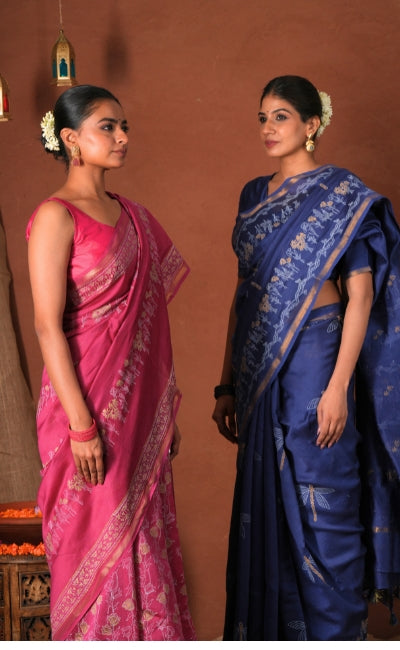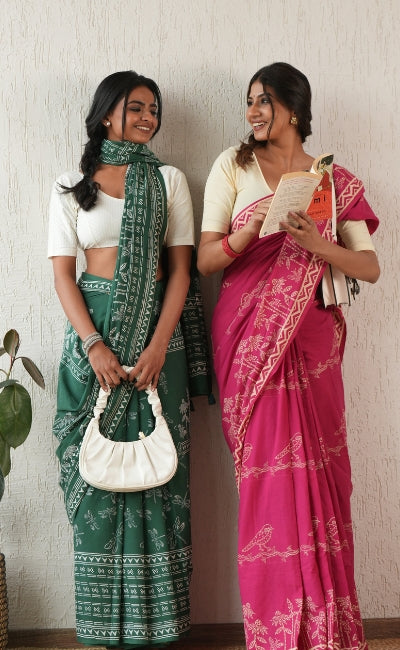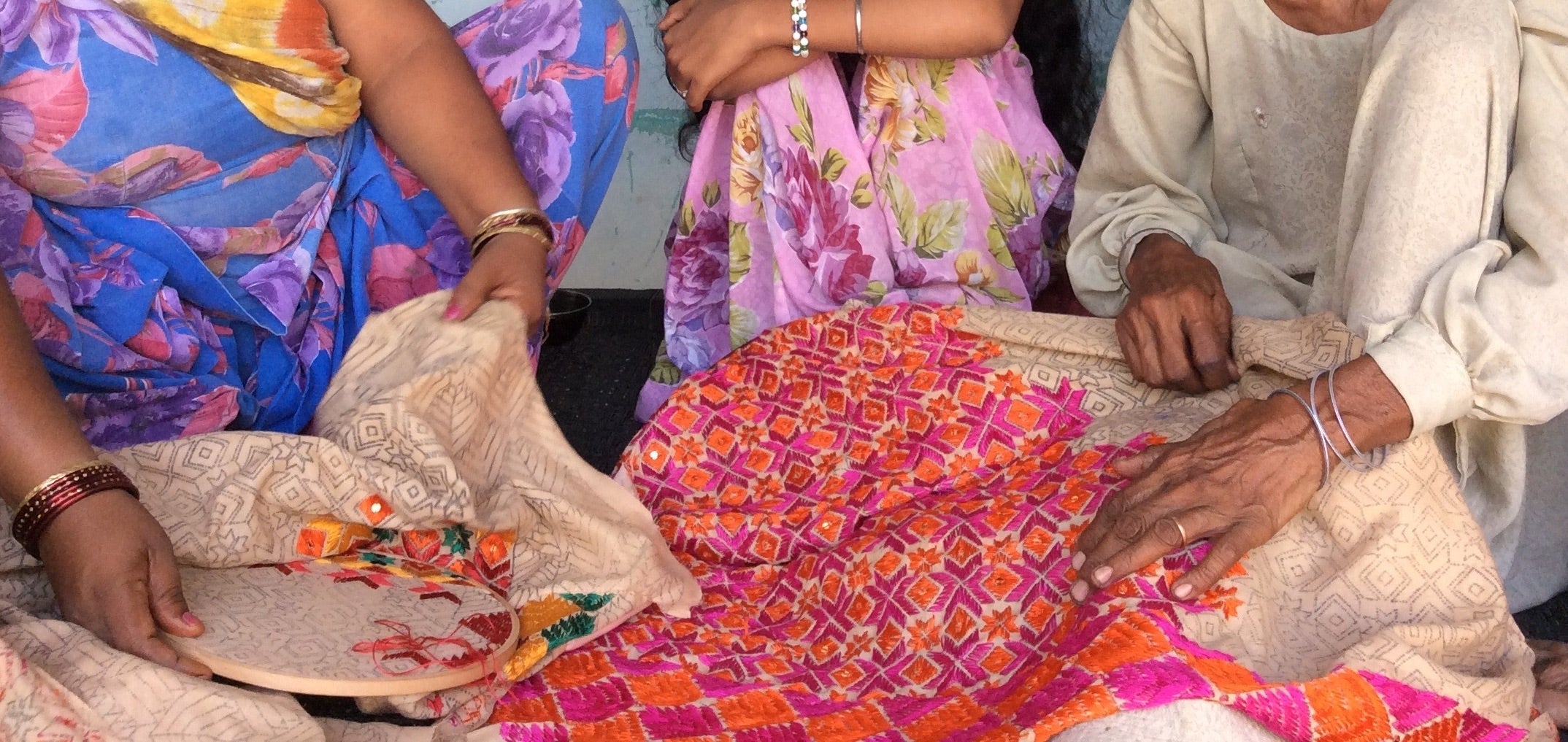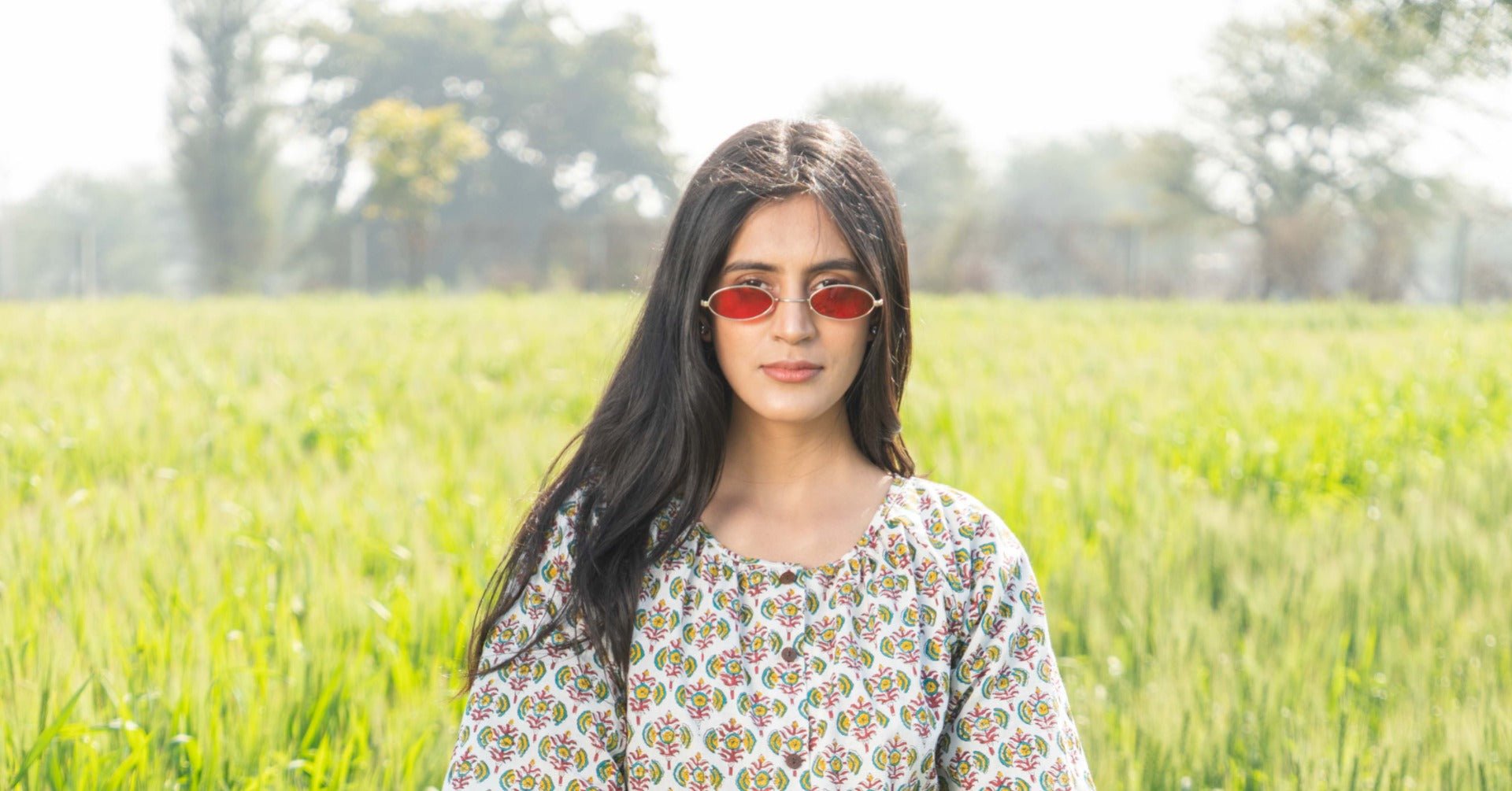
The joy of wearing a Banarasi Saree
The rich Banarasi saree's fascinating weaving history is hidden in the silk weaves. Back thousands of years ago, these sarees were made from the finest and original gold and silver threads. Because of the elegance and refinement with which it is woven and manufactured with outstanding artistry, women love to wear it to office occasions and traditional festivals. This beautiful saree has a special place in the hearts of women of all ages, religions, castes, and creeds. These Banarasi sarees have become popular in India and around the world. Banarasi sarees are more affordable and still a desirable addition to any bride's wardrobe, as they are like owning a piece of luxury history.
The Banarasi Saree Historical Background
Varanasi, a small town in Uttar Pradesh noted for its spirituality and Banarasi saree weavers who have been using this handwoven technique for thousands of years is home to the Banarasi saree. The introduction of the Banarasi saree to the country is mainly due to the Mughal dynasty. The Mughals, who made significant attempts to develop the skill of weaving and designing, brought in the outstanding artistry required to weave this silk in the year 1000-300 BC, with its elaborate artistry and zari and gold thread work. These weavers use the handwoven technique to weave ornate designs using gold and silver threads.
As a result, a large number of silk weavers were born. It wasn't until the sarees were finished that they realized they weren't just weavers but artists as well. One can observe the impact of the Mughal empire in the Banarasi silk we use today, especially in the Persian designs that are frequently incorporated. Kaasi became the region's textile hub thanks to the country's brilliant minds and the weavers' unrivaled talent.
Banarasi saree was initially created for the royal family and were adorned with real gold and silver. To make them entirely reasonable and accessible to the common woman, artisans replaced these pure gold and silver elements with gold and silver threads.
The city and its wealth grew in tandem with the silk industry. People rushed to the town for a touch, a feel, and a drape of the fine silk. In the world of sarees and silk, Banarasi saree began to produce art. The royals were enamored with the fabric. Sarees soon found their way into the hands of many a queen and princess. The grandeur has not faded over time; instead, it has flourished.
The Hype Of Banarasi Saree Online; Worth It Or Not?
Banarasi saree is known worldwide for their gold, zari, and silver handwork, as well as their natural silk and superb needlework. The majority of these sarees have beautiful motifs all over the body, and the golden work adds to their charm. Because of its wide selection of hues, Pashmina Banarasi has captivated the hearts of all ladies.
A Banarasi saree is made in Varanasi, a historic city named Banaras. The saree are famous for their gold and silver brocade or zari, quality silk, and lavish embroidery. They are among India's finest. But you can get your banarasi saree online easily in pocket-friendly range.
Looking For The Best Banarasi Saree Online, But Confused How To Identify One?
The hand-made ones will have a lot of thread work in the back and look very different from the front. In addition, only an authentic sari would be floating. Another way to tell if a Banarasi saree online is genuine or not. Banarasi is to look for a six to the eight-inch long piece of plain silk on the pallu.
Banarasi Saree And The Indian Bride
The bond between a Banarasi saree and any Indian woman is irreplaceable. Its extravagance, elaborate embellishments, and denotation of the class have made it one of the top sartorial options for a woman who wants to dazzle in a traditional style on her big day. It comes in various fabrics, including kora (organza) with zari and silk, georgette/chiffon, and tissue. But the best part is you can get these banarasi saree online.
Despite the popularity of cotton, tussar, and linen, pure silk remains the most prized of all. Although a Banarasi saree in silk has always been an essential element of an Indian bride's trousseau, modern and Western-inspired products had taken over the market, and it had lost its luster.
Banarasi Weave; Where Did It Come From?
Banarasi silk sarees dated to 1603 when weavers from Gujarat relocated to Banaras during Emperor Akbar's reign. Their love for beautiful silks and fabrics gave rise to the Banarasi silk saree's traditional designs, which are today respected for their quality. Since then, the Banarasi saree has become a proud symbol for Indian brides, and you can see banarasi saree online at many platforms.
If the 'Banarasi Pan' is an alluring delicacy for men, the 'Banarasi silk saree' is unquestionably irresistible for ladies.
Even today's fashion-conscious women are obsessed with the ethnic designs of Banarasi saree online available. Not unexpectedly, these banarasi saree have found a lot of demand in overseas markets and have made a lot of money.
Brocade sarees, Jangala, Satin border, Tanchoi, Meenabuti, Satin Ambos, Tissue, Crepe, Resham buti, and Cutwork sarees are some of the famous names for sarees made in Banaras.
Banaras brocade, literally a gold cloth, is the Indian fabric of dreams. Brocade is derived from the Latin word brocade (to prick), which denotes needlework or, more commonly, embroidery, weaving, or looming.
Ladies Loves Varieties, And Banarasi Saree Online Offers 'its Different Types
Banarasi silk, also known as Benarasi silk, comes from the city of Varanasi in the Indian state of Uttar Pradesh. Banarasi saree online have never lost their allure since they embody elegance and grandeur. Banarasi sarees are divided into numerous varieties and available in various designs, motifs, and embellishments, making them all seem distinctively different. Let's look at the different sorts of Banarasi sarees based on the fabric used: Kora, Georgette, Shattir, and Katan.
- Kora
Also known as Organza, Kora sarees are embroidered and feature exquisite zari work. This type stands out because of its intricate motifs and dominating gold and silver tones, which exude exemplary and flawless craftsmanship. Because of the fabric, Kora sarees aren't particularly heavy, but the amount of immaculate and hefty embroidery adds to their allure.
- Georgette
Georgette saree is designed with crepe yarn. This type of Banarasi saree is quite a delight to saree lovers. The material used to make the georgette saree is the lightest one the ladies will ever encounter. Georgette sarees have an elegance of their own.
- Shattir
Shattir can also be spelled as Sattir. This type of Banarasi saree demonstrates contemporariness and exclusivity. Shattir tends to be lighter than other Banarasi saree types. Due to this lightweight quality of Shattir, many women consider it perfect and cost-effective for regular use. For women looking for a saree that adds a touch of modernity with some rugged contemporary and exclusive designs, then Shattir is the perfect and recommended fit.
- Katan
Katan is a Banarasi spectacular with its exquisite shine, sheen, and perfectly woven motifs. This silk saree is easy to care for and is best recommended for its exceptional durability. Katan Banarasi silk sarees are excellent choices for weddings and other formal occasions. Their twisted silk threads distinguish Katan sarees. Previously woven on handlooms, these sarees now have elaborate motif patterns manufactured on power looms.
Handle With Care! Your Banarasi Saree Online Bought
- It may develop a permanent crease if you leave your saree hanging for an extended time.
- When wrapping it in the muslin cloth, please keep it in the darkened area, as this extra cover will allow air to circulate through the fabric and keep wetness at bay.
- To avoid discoloration, the dark area is crucial.
- Carefully iron your saree and cover it with a soft fabric.
- Avoid water and perfume on the saree since they leave a permanent stain.
- Place naphthalene balls or neem leaves with your saree to keep moths at bay.





